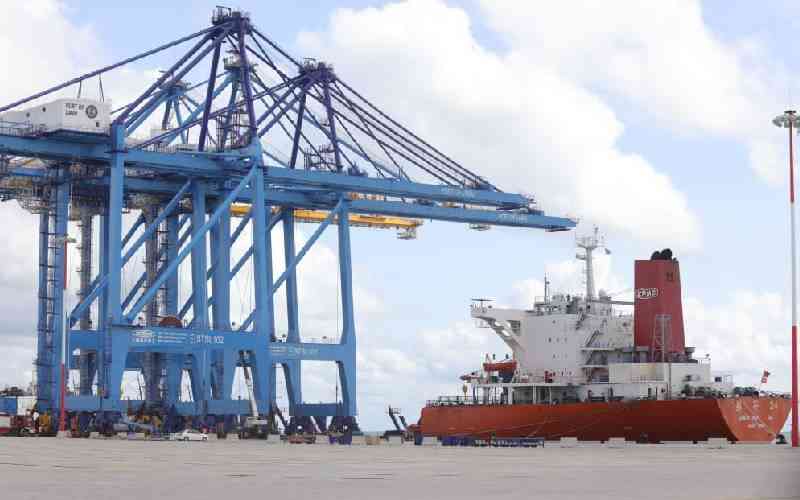One of the never-ending issues that complicate public perception about Kenya Ports Authority (KPA) is the confusion between the institution and the Port of Mombasa.
Actually, they say the easiest way to pull the rug from under the port’s success is to fail to understand the various stakeholders and their role in making the Port of Mombasa a success.
The world over, the distinct roles of the port community and the institution that runs the port are always interrelated but unique in terms of interests, goals and objectives. How each seaport defines their stakeholder groups, identifies movers and shakers, carries out two-way communications and incorporates input varies by port and by country, but there are some commonalities and melting points.
In a normal day, an average of more than 20,000 people enter and leave the port. Out of this massive human traffic, only 6,800 are employees of KPA. The rest are drawn from the port eco-system, comprising a vast range of cargo interveners that include shipping agents, clearing and forwarding firms, government agencies, suppliers and primary customers, transporters, residents of maritime districts, security agents, northern corridor actors, and business partners.
This number has remained constant courtesy of advancement in automation of key port services. The interaction level of all these people inside the port together with KPA is high. Depending on one’s work location, an employee has high chances of closely interacting with our different partners either in person or exchange paperwork for business transaction.
Unique partner
The fact that each unique partner demands a unique assortment of documents and processes adds complexity to the entire ecosystem. Equally important is that the port is a melting pot of international trade facilitators. The people inside the port, therefore, come from different parts of the globe, besides our East and Central Africa captive market.
When the coronavirus pandemic was first reported in the continent, KPA leadership swiftly formed a special committee comprising senior management staff and union representatives to manage the prevention and spread of the pandemic.
The first focus was to control the number of people entering the port. Accordingly, the management directed that only visitors with special purposes and on written appointment could enter the port. This step, in addition to the rollout of online documentation portals, significantly reduced human traffic. In the same vein, financial services had already been routed to cashless systems, such as direct deposits or transfers to KPA accounts
By the virtue that this pandemic is a health matter, KPA has throughout worked jointly with the port health department to roll out all the required local and international preventive measures.
The close collaboration led to the setting up of 147 handwashing points, installation of hand sanitisers in all offices, as well as distribution and usage of protective equipment across all the interaction points in the port.
The management embarked on continued health education and sensitisation of workers and the port community on Covid-19 preventive measures through PA systems in work areas and local radio stations.
Equally, the management had ensured that all machines and plant operators had adequate sanitisers and that all non-essential activities at the port had been suspended.
In a bid to protect its staff, the authority released all workers aged above 58 on temporary leave, as well as suspended all the biometric clock-in systems that we considered risky physical interaction areas. This was complemented with the introduction of a fumigation company to augment port health disinfection and decontamination activities. As the custodians of an international entry point, KPA has been working very closely with the port health department to ensure the necessary protocols are in place for checking the Covid-19 status of ship crew before they can berth at the Port of Mombasa. To date, no crew of any vessel has tested positive.
The bottom line here, therefore, is that the pandemic has not found its way from the ships and crew which call at the port.
Stay informed. Subscribe to our newsletter
Way forward
The virus has found its way from the community, and the best way forward is to ensure that every member of the community observes hygiene protocols to stay safe and also avoid infecting others.
KPA has already carried out phase one of mass testing and all patients that tested positive were immediately admitted in government-designated centres. The authority continues to take care of all staff who are quarantined by paying their bills.
These preventive measures notwithstanding, and given that KPA staff are like other Kenyans who serve customers who are non-employees, and go home after work where they mix with other county residents, the need to ascertain that every resident in the community is tested and embraces safety measures is imperative. KPA is trying its best to ensure all staff and port users are safe.
-The writer is acting managing director, KPA
 The Standard Group Plc is a
multi-media organization with investments in media platforms spanning newspaper
print operations, television, radio broadcasting, digital and online services. The
Standard Group is recognized as a leading multi-media house in Kenya with a key
influence in matters of national and international interest.
The Standard Group Plc is a
multi-media organization with investments in media platforms spanning newspaper
print operations, television, radio broadcasting, digital and online services. The
Standard Group is recognized as a leading multi-media house in Kenya with a key
influence in matters of national and international interest.
 The Standard Group Plc is a
multi-media organization with investments in media platforms spanning newspaper
print operations, television, radio broadcasting, digital and online services. The
Standard Group is recognized as a leading multi-media house in Kenya with a key
influence in matters of national and international interest.
The Standard Group Plc is a
multi-media organization with investments in media platforms spanning newspaper
print operations, television, radio broadcasting, digital and online services. The
Standard Group is recognized as a leading multi-media house in Kenya with a key
influence in matters of national and international interest.








